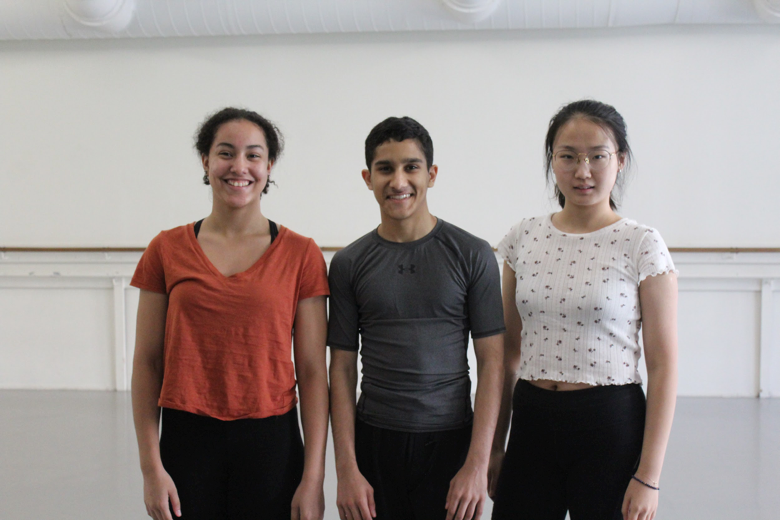Arts & Entertainment
Dance as Art and Therapy
By Francesca Fierro
Staff writer
For Di’Anna Bonomolo, Sohel Bagai and Selena Zhang, participants in the month-long Tisch Summer High School Dance program, dance is more than an extracurricular activity. It’s been a form of therapy.
“I have suffered with anxiety and PTSD from events like my dad’s departure from my family and sexual assault. So dance is a way to express myself in ways that I just can’t talk about,” said Bonomolo, who will be a senior at Choate Rosemary Hall, the elite Connecticut boarding school, in the fall.
“I was born with a speech disability and speaking had always been hard for me at a young age,” said Bagai, who will be a senior at El Modena High School in Orange, Calif. “That’s why I started dancing. I thought I could speak with my body. And I feel like I fit in more at my ballet school then at my public school.”
And Zhang, an international student from China attending the prestigious Kent School in Connecticut, faced her own kind of pressures. Back home, where her dance training began, said Zhang, who will start her senior year in September, “We would do a lot of shows and people paid to watch them. My teachers would check your weight every single week and make sure you were the same build as everyone else.”
Over lunch at NYU’s Marketplace café, the three also discussed what dance means in other areas of their lives and how their summer program is making them better dancers.
“I wasn’t always sure if I was going to keep dancing, especially when I got to Choate and they told me, ‘Your technique is all wrong,’” said Bonomolo, adding that she is the first Afro-Latina in the dance concentration at Choate, where 7.7 percent of the student body is black and 5.5 percent is Latinx.
“There’s so much pressure for you to do good,” she said, “and sometimes as a person of color you have to work twice as hard as a white person does.”
She and Bagai won full scholarships to attend the $11,756 summer intensive at Tisch.
“I feel like it’s going really well,” Bagai said of the program. “I’ve been able to improve a lot of my technique and nail those basics down, so I can get those tricks I’m learning at my ballet school to another level.”
Zhang, who developed anorexia from the “craziness” of trying to meet the severe expectations of her physique said, “I had to even stop dancing for a little bit so I could gain weight.”
In the United States, her dance studies have been healing. “When I came to America for high school, I joined a dance program and everyone was really encouraging. Through performing on stage again, along with their support, I gained some confidence about my body and became more comfortable being the way I am.”
All three agree that dancing has helped shape their character.
“No matter who you are or what you were born with,” Bagai said, “if you love something you’ll find a way to do it. You’ll find a way to do it for the rest of your life.”
For Zhang, dancing has allowed her to reclaim her narrative and some essential parts of her inner self. “Before, I was always listening to other people … They wanted something, I did it. But now, dancing at my boarding school, I choreograph my own pieces. I take control of what I want.”
So does Bonomolo, who sees dance as her legacy.
“There aren’t many women of color dancing in my school or in professional companies … It’s imperative for me to do the best I can so they can follow my footsteps. They will have their own foundation to sprout and flourish.”
She smiles. “They will create their own stories.”


